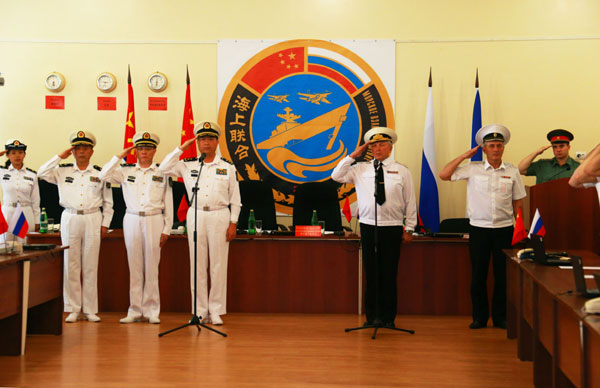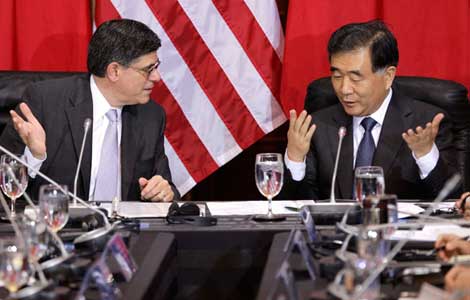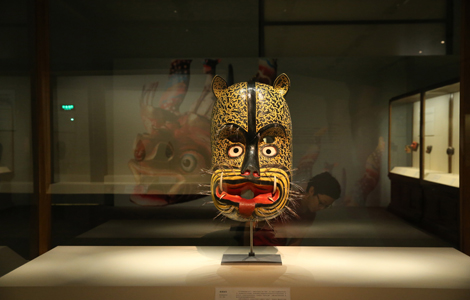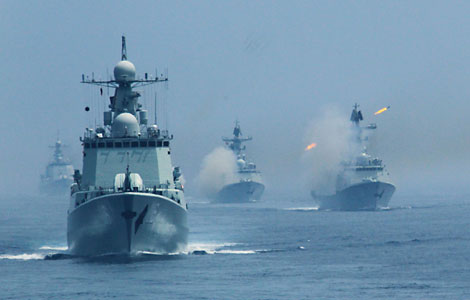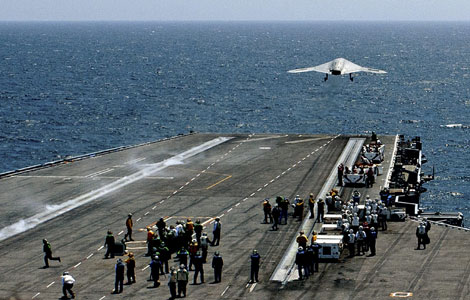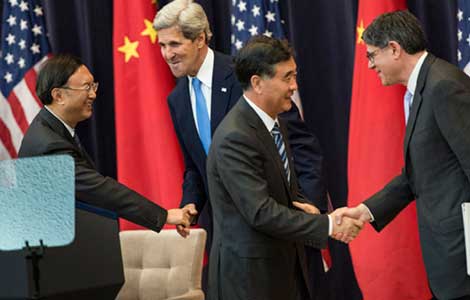China and Russia consider increasing naval exercises
Updated: 2013-07-12 07:26
By Zhao Shengnan in Vladivostok, Russia (China Daily)
|
||||||||
|
|
Senior officers from the Chinese and Russian navies said on Thursday they are considering more "diversified" joint exercises in different parts of the sea, as the two countries wrapped up their largest-ever exercise.
The success of the maneuvers in the Sea of Japan has shown both sides' increased capability to jointly address maritime threats, and highlighted a promising future for strengthening cooperation amid current unstable maritime situations in the region, they added.
Leonid Sukhanov, deputy chief of the Russian navy Main Staff, said the two navies have discussed plans for future cooperation, including holding more complicated and diversified exercises in other parts of the Pacific and joint training for naval officers.
Sukhanov made the remarks at the closing ceremony of the Chinese-Russian "Joint Sea 2013" naval exercises, which were held in Peter the Great Gulf near Vladivostok from July 5.
Ding Yiping, the Chinese deputy commander of the navy of the Chinese People's Liberation Army, said the Chinese fleet will continue exercises in the open sea on their way back to China after the fleet leaves Vladivostok on Friday.
During the three-day maneuvers, which began on Monday, the two sides held a wide range of exercises, including maritime supply, countering submarine threats, joint escorts, rescuing hijacked ships, maritime search and rescue, and a live-fire exercise involving air, sea-level and underwater targets.
Duan Zhaoxian, executive director of the Chinese task force, said the drill was more significant for China than it was during the first such joint exercise, which took place last year in China's Yellow Sea. This year's exercise marked the first time the Chinese navy had sent so many troops abroad to participate in an exercise in an unfamiliar part of the sea.
"We have developed a capability of holding drills with foreign forces at home and in the open sea," Duan told reporters. "In the future, the two sides will not only continue exercises in adjacent waters, but will possibly expand the exercise areas into the open sea to effectively safeguard both countries' strategic interests.
"With such a capability, we can fend off any threats amid the unstable maritime situations," he said.
A joint naval parade, with 13 warships and three aircraft from the two countries, took place on Wednesday afternoon.
The New York Times said the parade marked the high point of joint naval exercises, which intended to show the growing unity between the two countries.
The newspaper quoted Nan Li, associate professor in the strategic research department at the US Naval War College in Newport, Rhode Island, as saying the diversity of vessels and the more sophisticated exercises show the deepening military cooperation between Russia and China.
In last year's joint naval exercise, maneuvers were designed only for counterterrorism and combating piracy, he said. This time the exercises included fleet air defenses, anti-submarine warfare and surface warfare.
The two navies also held open houses on their ships along with a number of sports events and cultural performances.
zhaoshengnan@chinadaily.com.cn
Most Viewed
Editor's Picks

|

|

|

|

|

|
Today's Top News
Constructive mood at Sino-US talks
China, Russia consider increasing naval drills
2 pilots called for Asiana to abort landing
Increased cooperation brings benefits
Japanese defense report lashed out
Lifesaving top priority, premier says
China's astronauts ready for challenge
Top GSK executives investigated
US Weekly

|

|
